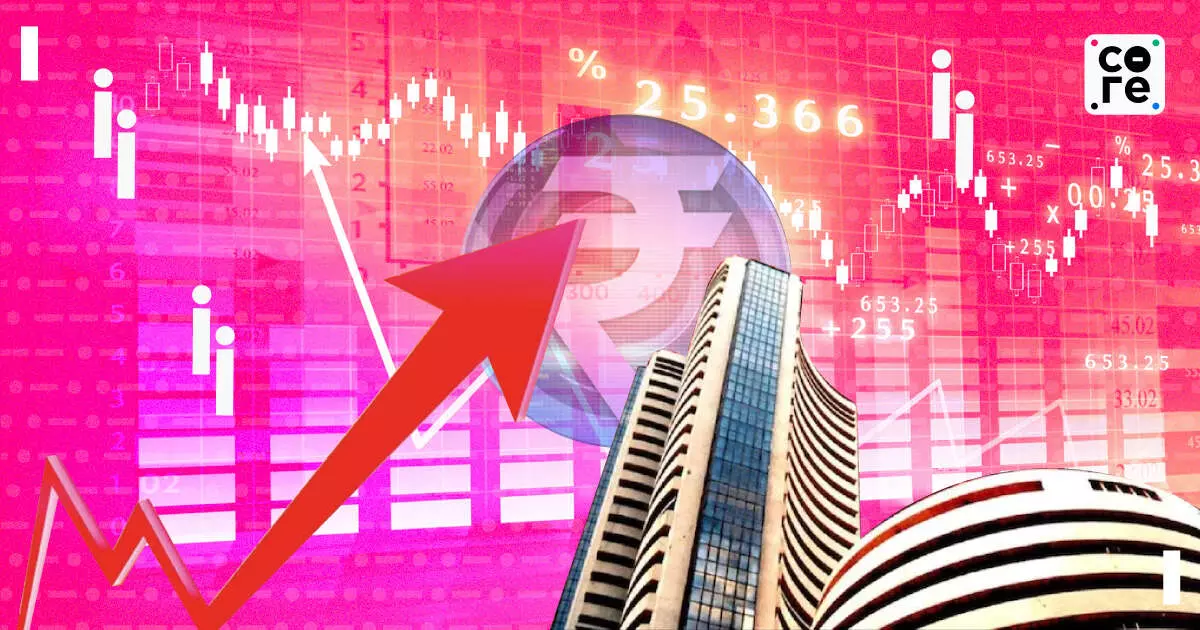
FIIs Are Hedging Their Bets But Domestic Investors Are Going All In On Narendra Modi
Valuations are a concern but the worries are largely limited to small- and mid-cap stocks

The sudden jitters that gripped the Indian stock markets after the first three rounds of polling in the Lok Sabha elections, appear to have receded. Traders had built up short positions on doubts that the ruling National Democratic Alliance led by the Bharatiya Janata Party had performed below expectations in the early stages. Those fears are abating with more investors now believing that the Narendra Modi government is set to return to power when votes are counted on June 4.
On Thursday, India rejoined the bull run in the world markets with the S&P BSE Sensex touching a lifetime high of 75,460 intraday, before closing at 75,418, higher by 1,197 points; and the Nifty 50, coming close to 23,000 after hitting a record of 22,989 and ending 370 points up at 22,968. The broader markets were strong as well, touching lifetime highs too, with the BSE MidCap index hitting a new high of 43,442.5 and the S&P BSE SmallCap index touching a new lifetime high of 48,229.
“The market now is expecting political stability and policy continuity after the election outcome,” Sanjeev Hota, vice president - research, Sharekhan, told The Core. The sentiment on Thursday was also boosted by the Rs 2,10,000 crore dividend that the Reserve Bank of India passed on to the government. That in turn was seen to be improving the macros - like India’s fiscal deficit - and boosting government spending on infrastructure and related areas which sent stoc...
The sudden jitters that gripped the Indian stock markets after the first three rounds of polling in the Lok Sabha elections, appear to have receded. Traders had built up short positions on doubts that the ruling National Democratic Alliance led by the Bharatiya Janata Party had performed below expectations in the early stages. Those fears are abating with more investors now believing that the Narendra Modi government is set to return to power when votes are counted on June 4.
On Thursday, India rejoined the bull run in the world markets with the S&P BSE Sensex touching a lifetime high of 75,460 intraday, before closing at 75,418, higher by 1,197 points; and the Nifty 50, coming close to 23,000 after hitting a record of 22,989 and ending 370 points up at 22,968. The broader markets were strong as well, touching lifetime highs too, with the BSE MidCap index hitting a new high of 43,442.5 and the S&P BSE SmallCap index touching a new lifetime high of 48,229.
“The market now is expecting political stability and policy continuity after the election outcome,” Sanjeev Hota, vice president - research, Sharekhan, told The Core. The sentiment on Thursday was also boosted by the Rs 2,10,000 crore dividend that the Reserve Bank of India passed on to the government. That in turn was seen to be improving the macros - like India’s fiscal deficit - and boosting government spending on infrastructure and related areas which sent stocks soaring up.
Valuations a Concern?
Valuations increasingly appear to be a concern, but not across the board. Hota says he isn’t worried about large cap companies, but does see some froth having built up in some mid-cap, small-cap, and micro-cap companies.
“Having said that, we need to be very, very selective,” Hota added, advising picking stocks of mid- and small-cap companies whose earnings are likely to multiply quickly rather than grow slowly.
Who Is Driving The Market?
Foreign institutional investors (FIIs) have been quite erratic over the past one and a half years, Hota points out. FIIs sold Indian shares worth Rs 37,700 crore since the Lok Sabha elections began on April 19, betraying nervousness over the outcome of the elections. The ownership gap between foreign and domestic institutional investors narrowed to the lowest ever in the March quarter; it was 1.6% at the end of the quarter, as compared to 10.3% in March 2015.
The unrelenting flows into systematic investment plans routed through domestic institutional investors and retail investor enthusiasm is driving the market. “The trend has really changed in the last four or five years…our retail investor has now become smarter,” he said. This is why, he added, that despite FIIs missing from the market and continuing on a selling spree, the markets are touching new highs.
However, with the kind of political stability or corporate earnings growth that India is going to offer going forward, FIIs will come back, Hota added.
What’s The Outlook?
“India is going through a decadal kind of opportunity,” Hota said. For one, it is in a sweet spot across emerging and developed markets, where its earnings are supported by the domestic economy, as opposed to export markets, he explained. Plus, India aims to become a $10 trillion economy by 2030 – it is likely that the market cap will touch $10 trillion sooner than that. “Our market cap is much higher than the GDP of the country…having these kinds of numbers, there is definitely a long-term structural picture,” he said.
The long-term structural growth is what one should focus on, rather than the political outcome, Hota added. While there is confidence in the ruling party winning the upcoming election, Hota said that he doesn’t want to be unprepared. “We have seen what happened in the year 2004, where everybody was expecting the BJP to continue and then that didn't happen…so a knee jerk reaction can come,” he said.
However, he added that it was most likely that the ruling BJP would be back in power and “that is going to continue the structural growth story.”
Valuations are a concern but the worries are largely limited to small- and mid-cap stocks

